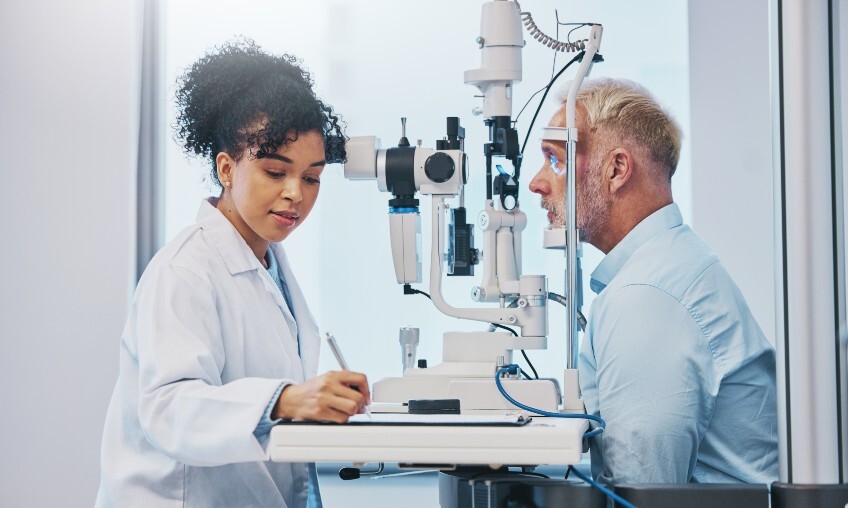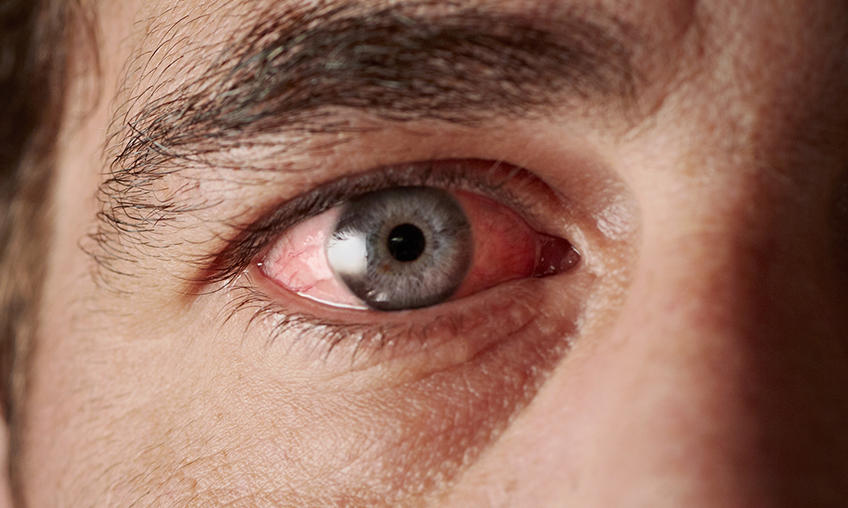
By John-Michael Cummings, OD
Eyesight may change as time passes, but vision loss is not a normal part of aging. Early diagnosis and timely treatment and follow-up care help to protect against permanent vision loss in mature adults.
You usually can’t tell when you’re in the early stages of some common eye problems. Some can take away your vision and your ability to function without help. Regular dilated eye exams are the best way to detect early signs of many eye problems. The National Eye Institute (NEI) recommends annual dilated eye exams for anyone over 60, especially when you are at higher risk for eye disease.
60 and Beyond: The Most Common Eye Problems
Awareness can help prevent eye issues, so let’s talk about the most common eye diseases that can harm vision for mature adults.
Age-related macular degeneration (ARMD) is the leading cause of vision loss in older adults, according to the US Office of Disease Prevention and Health Promotion (ODPHP). As ARMD develops, it can make you unable to see straight in front of you. It may also cause blurry or wavy areas in the center of your vision, says the NEI. Protect yourself with regular eye exams for early diagnosis and treatment.
Cataracts are cloudy areas in the lens of your eye. They happen with normal eye changes over the years, sometimes starting as early as age 40. Almost everyone will eventually develop a cataract given enough years. Certain proteins in the lens start to break down and clump together. This clump is a cataract, says the NEI. Over time, cataracts make more of the lens cloudy and can greatly reduce eyesight. The Mayo Clinic spells out these symptoms of cataracts:
- Clouded, blurred or dim vision.
- Trouble seeing at night.
- Sensitivity to light and glare.
- Needing brighter light to see.
- Seeing halos around lights.
- Frequent changes in eyeglass prescription.
- Fading or yellowing of colors.
- Double vision in one eye.
Diabetic retinopathy is damage to the blood vessels of the light-sensitive tissue at the back of the eye (retina), says the Mayo Clinic. The NEI says it can happen with any type of diabetes. Over time, more than half of people with diabetes develop this condition. To lower the risk of diabetic retinopathy, it is important to control your diabetes. Everyone with diabetes must see an eye doctor at least once a year. Early diagnosis of this condition can help prevent permanent vision loss.
These are signs of diabetic retinopathy that is advancing:
- Seeing more floaters (small spots or squiggly lines that float across your vision).
- Blurry vision or vision that sometimes changes from blurry to clear.
- Seeing blank or dark areas in your field of vision.
- Poor night vision.
- Colors start to look faded.
- Losing vision.
Glaucoma has no early symptoms. Half of those who have it don’t know until they start losing their eyesight, according to the ODPHP. Unfortunately vision loss from glaucoma cannot be reversed, so it is important to catch the condition early. Glaucoma is more common in African Americans who are 40 and older. It is also more likely for people aged 60 and older, especially Latin Americans and people whose close relatives have had the disease.
As glaucoma develops, symptoms may include:
- Eye pain or pressure.
- Headaches.
- Rainbow-colored halos around lights.
- Low vision, blurred vision, narrowed vision (tunnel vision) or blind spots.
- Nausea and vomiting.
- Red eyes.
Take Steps to Protect Your Sight
You can protect your eyesight with regular eye doctor visits. The doctor can spot and treat problems that could rob you of your eyesight.
If your last eye exam was more than a year ago, please schedule an appointment right away. Ask your eye doctor about your risk for vision loss. Awareness and regular care can make a big difference!
Close to a million members protect their vision with the eye-care professionals of EyeQuest, a division of Sun Life U.S.
 Preventistry Pulse Image
Preventistry Pulse Image
PREVENTISTRY PULSE
A newsletter with tips and information to improve your oral health.





